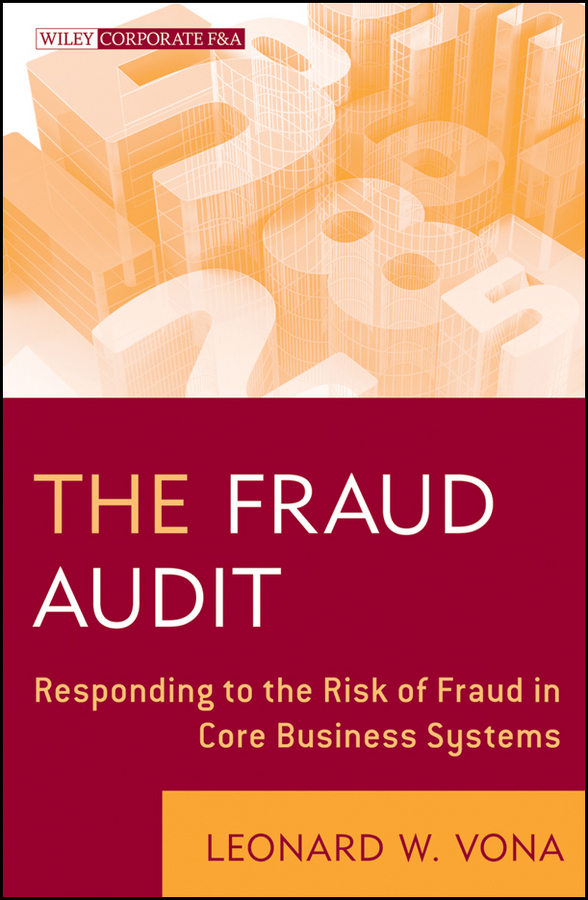
The fraud audit: responding to the risk of fraud in core business systems
Vona, Leonard W.
Essential guidance for creation of an effective fraud audit program in core business systems The Association of Certified Fraud Examiners has reported thatU.S. businesses lose up to $4 billion annually due to fraud and abuse. Discover fraud within your business before yours becomes another business fraud statistic. Fraud in the Core Business Systems provides a proven fraud methodology that allows auditors to discover fraud versus investigating it. Explains how to create a fraud audit program Shows auditors how to locate fraud through the use of data mining Focuses on a proven methodology that has actually detected fraudulent transactions Take a look inside for essential guidance for fraud discovery within specific corporate F&A functions, such as disbursement, procurement, payroll, revenue misstatement, inventory, journal entries, and management override. INDICE: Preface. Acknowledgments. Chapter 1: What Is a Fraud Audit? Why Respond to Fraud Risk? The Fraud Paradigm. Fraud Auditing. Fraud Defined. The Fraud Triangle. Responses to the Risk of Fraud. Summary. Chapter 2: ProfessionalStandards. Overview. Fraud Audit Standards. Summary. Chapter 3: Fraud Scenarios. Key Definitions and Terms. Fraud Risk Structure. Classifying Fraud. Identifying Fraud Scenarios. Fraud Audit Considerations. Summary. Chapter 4: Brainstorming: The Implementation of Professional Standards. What Is Brainstorming? When to Brainstorm. Summary. Chapter 5: Assessment of Fraud Likelihood. Preparing a Fraud Risk Assessment. Summary. Chapter 6: Building the Fraud Audit Program. Traditional Audit versus the Fraud Audit. Responding to the Risk of Fraud.A Fraud Audit Program. Testing Procedures. Fraud Concealment Effect on the Audit Response. Audit Evidence Issues. Fraud Scenario Examples. Summary. Chapter7: Data Mining for Fraud. The Art and Science of Data Mining. Strategies for Data Mining. Limitations of Data Mining. Summary. Chapter 8: Fraud Audit Procedures. Basis of Fraud Audit Procedures. Levels of Fraud Audit Procedures. Design of Fraud Audit Procedures. Summary. Chapter 9: Document Analysis. Document Analysis and the Fraud Audit. Levels of Document Examination. Document Red Flags. Brainstorming Sessions and Document Red Flags. The Fraud Audit Program andDocument Red Flags. Summary. Chapter 10: Disbursement Fraud. Fraud Risk Structure. Audit Approaches. Summary. Chapter 11: Procurement Fraud. Fraud Risk Structure. Audit Procedures. Summary. Chapter 12: Payroll Fraud. Fraud Risk Structure. Audit Procedures. Summary. Chapter 13: Revenue Misstatement. Fraud Risk Structure. Audit Approach. Summary. Chapter 14: Inventory Fraud. Fraud Risk Structure. Audit Procedures. Summary. Chapter 15: Journal Entry Fraud. Fraud Risk Structure. Audit Procedures. Summary. Chapter 16: Program Management Fraud. Fraud Risk Structure. Audit Approach. Summary. Chapter 17: Quantifying Fraud. Conveying the Impact to Management. Role of Evidence in Calculating a Fraud Loss. Impact on the Fraud Audit. Options for Management. Case Studies. Summary. Appendix. About the Author. Index.
- ISBN: 978-0-470-64726-4
- Editorial: John Wiley & Sons
- Encuadernacion: Cartoné
- Páginas: 432
- Fecha Publicación: 20/07/2011
- Nº Volúmenes: 1
- Idioma: Inglés
